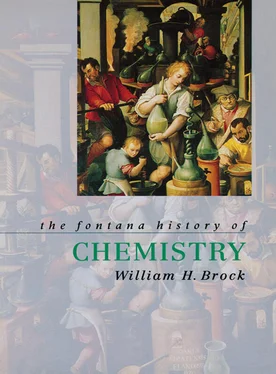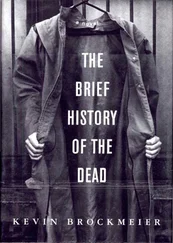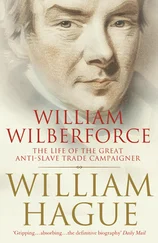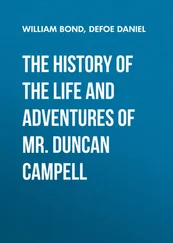1 ...7 8 9 11 12 13 ...39 Whatever the etymology, the Latin and English words alchemia , alchemy and chemistry were derived from the Arabic name of the art, ‘al Kimiya’ or ‘alkymia’. According to the Oxford English Dictionary , the Arabic definite article, ‘al’, was dropped in the sixteenth century when scholars began to grasp the etymology of the Latin ‘alchimista’, the chemist or practitioner; but it is far more likely to have followed Paracelsus’ decision to refer to medical chemistry as ‘chymia’ or ‘iatrochemia’. The word ‘chymia’ was also used extensively by the humanist physician, Georg Agricola (1494–1555), whose study of the German mining industry, De re metallica , was published in 1556. Although he used Latin coinages such as ‘chymista’ and ‘chymicus’, it is clear from their context that he was still referring, however, to alchemy, alchemical techniques and alchemists, and that he was, in the tradition of humanism, attempting to purify the spelling of a classical root that had been barbarized by Arabic contamination.
Agricola’s simplifications were widely adopted, notably in the Latin dictionary compiled by the Swiss naturalist, Konrad Gesner (1516–65) in 1551, as well as in his De remediis secretis: liber physicus, medicus et partim etiam chymicus (Zurich, 1552). As Rocke has shown, the latter work on pharmaceutical chemistry was widely translated into English, French and Italian, and seems to have been the fountain for the words that became the basis of modern European vocabulary: chimique, chimico, chymiste, chimist , etc. Curiously, the German translation of Gesner continued to render ‘chymistae’ as ‘Alchemisten’. German texts only moved towards the form Chemie and Chemiker in the early 1600s.
By then, influenced by the practical textbook tradition instituted by Libavius, as well as by the iatrochemistry of Paracelsus (chapter 2), ‘alchymia’ or ‘alchemy’ were increasingly terms confined to esoteric religious practices, while ‘chymia’ or ‘chemistry’ were used to label the long tradition of pharmaceutical and technological empiricism.
When the economist, John Maynard Keynes, bought some of Newton’s manuscripts in 1936 when Newton’s papers were unfortunately dispersed, he drew attention to the non-mathematical, ‘irrational’ side of Newton. Here was a famous scientist who had spent an equal part of his time, if not the major part, on a chronology of the scriptures, alchemy, occult medicine and biblical prophecies. For Keynes, Newton had been the last of the magicians. Historians have tended to ignore Newton’s alchemical and religious interests, or simply denied that they had anything to do with his work in mathematics, physics and astronomy. More recently, however, historians such as Robert Westfall and Betty Jo Dobbs, who have immersed themselves in the estimated one million words of Newton’s surviving alchemical manuscripts, have seen his interest in alchemy as integral to his approach to the natural world. They view Newton as deeply influenced by the Neoplatonic and Hermetic movements of his day, which, for Newton, promised to open a window on the structure of matter and the hidden powers and energies of Nature that elsewhere he tried to express and explain in the language of corpuscles, attractions and repulsions.
For example, the German scholar, Karin Figula, has been able to demonstrate that Newton was steeped in the work of Michael Sendivogius (1556–1636?), a Polish alchemist who worked at the Court of Emperor Rudolph II at Prague, where he successfully demonstrated an apparent transmutation in 1604. In his several writings, which were translated and circulated in Britain, Sendivogius wrote of a ‘secret food of life’ that vivified all the creatures and minerals of the world 7 :
Man, like all other animals, dies when deprived of air, and nothing will grow in the world without the force and virtue of the air, which penetrates, alters, and attracts to itself the multiplying nutriment.
As we shall see in the following chapter, this Stoic and Neoplatonic concept of a universal animating spirit, or pneuma, which bathed the cosmos, was to stimulate some interesting experimental work on combustion and respiration in the 1670s.
In a spurious work of Paracelsus, Von den natürlichen Dingen , it had been predicted that a new Elijah would appear in Europe some sixty years after the master’s death. A new age would be ushered in, in which God would finally reveal the secrets of Nature. This prophecy may explain why, as William Newman has suggested, early seventeenth-century Europe was peopled by several adepts like Sendivogius who claimed unusual powers and insights. Another, this time fictitious, adept was ‘Eirenaeus Philalethes’, whose copious writings were closely read by Newton. It is possible that Newton developed his interest in alchemy while a student at Cambridge in the 1660s under the tutelage of Isaac Barrow, who had an alchemical library. But it is equally likely that it was Robert Boyle’s interest in alchemy and in the origins of colours that stimulated Newton’s interest, as well as making him a convinced mechanical philosopher. Like Boyle, Newton was interested in alchemical reports of transmutations as providing circumstantial evidence for the corpuscular nature of matter. In addition, however, Newton was undoubtedly interested in alchemists’ Neoplatonic claims of secret (or hidden) virtues in the air and of attractions between heavenly and earthly matter, and in the possibility, claimed by many alchemical authorities, that metals grew in the earth by the same laws of growth as vegetables and animals. In April 1669 Newton bought a furnace as well as a copy of the compilation of alchemical tracts, Theatrum Chemicum. Among his many other book purchases was the Secrets Reveal’d of the mysterious Eirenaeus Philalethes, whom we now know to have been one of Boyle’s New England acquaintances, George Starkey. The book, which Newton heavily annotated, aimed to show that alchemy mirrored God’s labours during the creation and it referred to the operations of the Stoics’ animating spirit in Nature.
Starkey laid stress upon the properties of antimony, whose ability to crystallize in the pattern of a star following the reduction of stibnite by iron had first been published by the fictitious monk, ‘Basil Valentine’ in 1604 in The Triumphant Chariot of Antimony , one of the most important alchemical treatises ever published. Valentine, who was supposed to have lived in the early fifteenth century, was the invention of Johann Tholde, a salt boiler from Thuringia. The Triumphant Chariot was concerned with the preparation of antimony elixirs to cure various ailments, including venereal disease. In Secrets Reveal’d , Starkey referred to crystalline antimony (child of Saturn from its resemblance to lead) as a magnet on account of its pattern of rays emanating from, or towards, the centre. Newton appears to have spent much of his time in the laboratory in the 1670s investigating the ‘magnetic’ properties of the star, or regulus, of antimony, probably in the shared belief with Philalethes that it was indeed a Royal Seal, that is, God’s sign or signature of its unique ability to attract the world’s celestial and vivifying spirit.
Very possibly it was Newton’s interest in solving the impossibly difficult problem of how passive, inert corpuscles organized themselves into the living entities of the three kingdoms of Nature that drove him to explore the readily available printed texts and circulating manuscripts of alchemy, including, in particular, the works of Sendivogius and Starkey. As Professor Dobbs has expressed it 8 : ‘it was the secret of [the] spirit of life that Newton hoped to learn from alchemy’. Newton’s motive, which was probably shared by many other seventeenth-century figures, including Boyle, was quite respectable. Its purpose, ultimately, was theological. A deeper understanding of God could well come from an understanding of the ‘spirit’, be it light, warmth, or a universal ether, which animated all things.
Читать дальше












